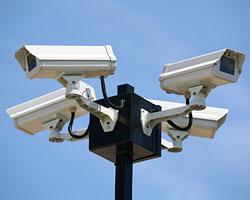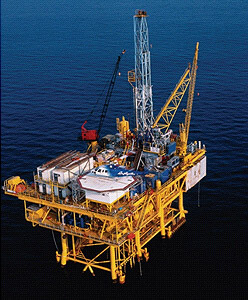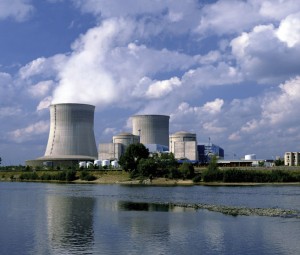February 14th, 2012 | Blog | Product Information
Welcome to part three of our series on Getting to Know Thermoelectric Cooling Technology. To quickly recap, in part one of our series we shared with you Jean Peltier’s discovery of Thermoelectric Cooling. We presented the advantages of thermoelectric cooling and explored where thermoelectric cooling technology is used today. In part two of our series we focused on the different types of electronic and electrical devices that require thermal management including; computers, sensitive electronics, and mission-critical electronics that keep processes running smoothly. In our concluding post we will examine some of the most treacherous environments, inhospitable surroundings and corrosive atmospheres that destroy electronic and electrical devices.
There are a number of harsh environments that directly impact the demand for the thermal management of advanced electronic and electrical devices. Unwanted heat, can cause electronics to fail. This heat must be managed in order to increase safety and efficiency of our most mission-critical electronics. Most enclosed electronics obtain unwanted heat in two ways.
Internal Heat Sources: All computers and electronic components generate a certain amount of heat. Ironically, the same equipment that can be damaged by heat is in many cases the primary source of the heat. External Heat Sources: The environment in which advanced electronic and electrical devices are located can also be a major factor in adding unwanted heat.
 Environments like the desert create complex electronic protection challenges. The desert has one of the harshest climates in the world. Desert winds often cause powerful sand storms and dust devils. The winds are desiccating and dust-laden. When a national security company was in need of a solution that could provide both cooling and heating for the enclosures housing camera systems used at select US border crossings, EIC developed a solution that fit their needs. The national security company experienced a reduction in monitoring system downtime by preventing failures due to the temperature extremes associated with U.S borders.
Environments like the desert create complex electronic protection challenges. The desert has one of the harshest climates in the world. Desert winds often cause powerful sand storms and dust devils. The winds are desiccating and dust-laden. When a national security company was in need of a solution that could provide both cooling and heating for the enclosures housing camera systems used at select US border crossings, EIC developed a solution that fit their needs. The national security company experienced a reduction in monitoring system downtime by preventing failures due to the temperature extremes associated with U.S borders.
Using a solid-state technology to accomplish temperature change, thermoelectric coolers eliminate the need for refrigerants and operate with fewer moving parts. They can cool enclosures to temperatures below ambient conditions while producing little noise and vibration. Featuring reliability and a long life span, coupled with flexible input power requirements and mounting arrangements, thermoelectric air conditioners offer significant advantages over conventional cooling methods.

Offshore production platforms by nature are located in harsh environments and require large amounts of sensitive electronics to keep production running 24 hours a day. Quite simply, oil rigs draw extremely flammable fluids out of the Earth and separate highly poisonous gas from the extracted fluids. Oil rig employees operate with all the risk associated with dangerous machinery and working outdoors during stormy conditions. When an oil and gas exploration company needed an air conditioning solution for electrical control panels in their offshore rigs and refining plants in the Gulf of Mexico, EIC developed a solution that fit their needs and increased safety. For this company, the temperature within the electrical panels on the company’s oil rigs can now be maintained at a safe level without the risk of explosion.
Electronic process control equipment has made modern industrial plants more efficient and safer. Corrosive gases in these modern industrial plants can permeate into control rooms and cause corrosion on computers, sensitive electronics and other mission-critical systems. Rapid changes in temperature or humidity can accelerate corrosion on electronic components and can lead to catastrophic failure in critical control and safety systems. When a nuclear power plant approached EIC Solutions because they were unhappy with the failure rates and maintenance levels of their existing compressor-based cooling systems, EIC developed a solution. EIC provided a custom double-bay rack-mount Protector™ Series Electronic Enclosure with an integrated 2500 BTU Thermoelectric Air Conditioner to cool the entire enclosure. The solution for the nuclear power plant fit their needs and resulted in a significant reduction in failure rates as well as maintenance costs.

The utilization of a thermoelectric cooling system to cool electronic/electrical enclosures provides a number of significant advantages. While the initial cost of a thermoelectric system is comparable to compressor-based systems, the long term reliability of thermoelectric coolers drives down the total cost of ownership over time. You can learn more about thermoelectric cooling and mission-critical electronics protection by visiting www.eicsolutions.com